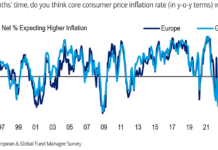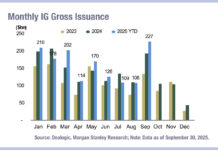By Flora McFarlane.
The Fundamental Review of the Trading Book (FRTB) will have a greater impact on larger European banks according to a new report entitled ‘Basel “IV”: What’s next for banks?’ from consultancy McKinsey.
The study draws from a sample of 130 European banks, reflecting interdependencies between all capital adequacy proposals, to provide a more universal perspective on the impact of the regulations. It found the effect of FRTB on Common Equity Tier-1 (CET1) ratios of European banks would be lower than for other elements of new capital rules. Current CET1 ratios of European banks are predicted to drop by 29%, falling to a 9.5% ratio from the current 13.4 percent ratio, as a result of the capital requirements dubbed ‘Basel IV’.
The severest effect was found comes from the floors on output of the internal ratings-based (IRB) approach, which would decrease CET1 ratios on average by about 1.3 percentage points. Other significant drivers are the new operational-risk SMA with 0.8 percentage points and the Basel III phase-in impacting by approximately 0.5 percentage points.
Although the analysis suggests that the FRTB will have a “comparably low impact” in relations – about 0.3 percentage point decrease in CET1 ratios – it reflects that a greater indicator of impact on an individual basis will be the use of internal-model methods versus the SMA.
The key scenario assumption for the FRTB initiative assumes “standardised approach market risk weighted assets (RWA) increase by 80% and internal model market risk RWA increase by 40% for international banks and 25% for regional banks.”
The analysis predicts that larger financial institutions – based on total assets – will see their CET1 requirement more significantly affected by the new Basel IV rules, notably the impact of FRTB impact – dropping approximately 0.4 percentage points. The introduction of the standardised measurement approach (SMA) for operational risk would decrease their ratios by approximately 1.2 percentage points – including advanced measurement approach (AMA) model elimination.
By contrast, assessment of FRTB impact on the sample of the smallest ten institutions indicates that these institutions are more affected by the revised credit risk standardised approach (SA) and accounting standards IFRS 9, which are predicted to see the CET1 ratio of smaller banks drop by approximately 0.8 percentage points and around 1.0 percentage points, respectively.
The research shows that although SA retail banks are less affected than specialised institutions in relation to the new regulations as a whole, the FRTB will have the greatest CET1 ratio decrease on universal banks at -0.4 percentage points.
The report emphasises that the impact of ‘Basel IV’ will be much greater than expected, necessitating banks to raise more capital and take unconventional measures depending the on location and size of institution.
©Markets Media Europe 2025












